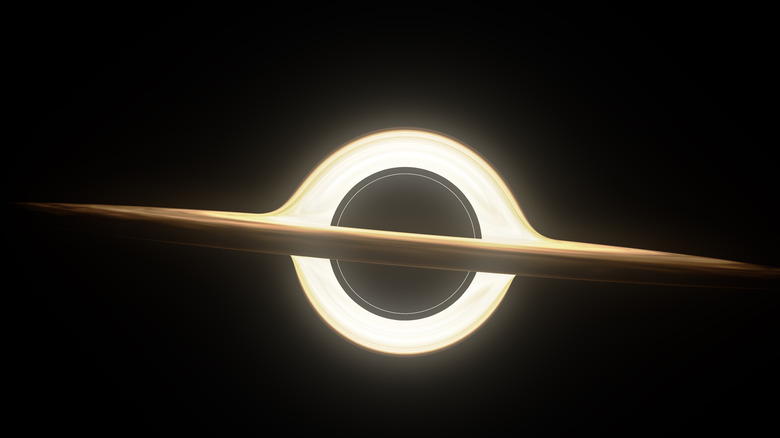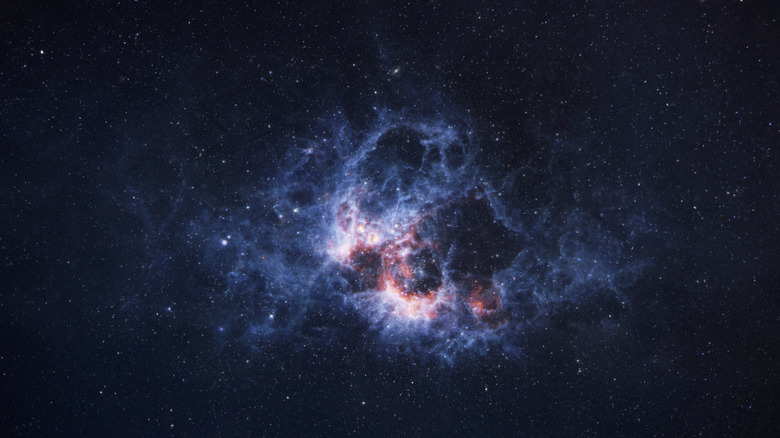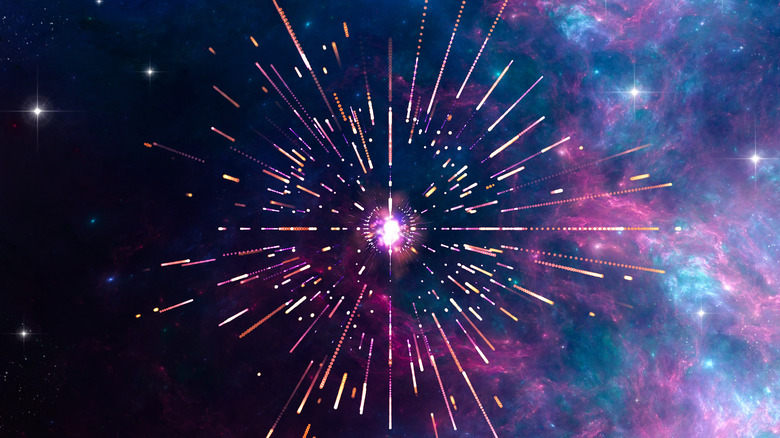Do Black Holes Create Dark Energy? Here's What Scientists Have To Say
One of the greatest mysteries in cosmology is the nature of what we refer to as dark energy. This mysterious force drives the expansion of the universe to accelerate. Dark energy is an unknown component of the cosmos that appears to make up roughly 70% of the universe today. It acts in a repulsive way (negative pressure) so that instead of gravity slowing expansion, dark energy now drives it outwards.
Until recently, the standard view has been that dark energy is constant in time, the so-called "cosmological constant." But a recent study published in Physical Review Letters challenges that assumption. Rather than being fixed, dark energy may be changing across cosmic history, but on top of that, this research seems to indicate that the engine behind it might be the collapse of stars into black holes. The researchers propose a model in which collapsing massive stars produce black holes that convert ordinary matter into dark energy over time, tying together observations from the large-scale structure of the universe, the cosmic microwave background, and galaxy surveys.
The cosmic observation with DESI
DESI is a cutting-edge astronomical instrument designed to map the large-scale structure of the universe – even creating the most detailed 3D map of the universe — by measuring the light of a million galaxies. Located at the Kitt Peak National Observatory in Arizona, DESI features about 5,000 robotic "eyes" that can simultaneously collect light from thousands of galaxies and other distant objects, thus mapping the cosmos across billions of light years.
In the new study, scientists used DESI's precise measurements of how galaxies cluster and move apart to test different models of dark energy. When they compared these observations with the standard model which assumes constant dark energy (known as Lambda-Cold-Dark-Matter or ΛCDM) they found inconsistencies, particularly in how the universe's matter content seems to evolve over time. The researchers then developed an alternative explanation based on how black holes interact with the expansion of the universe.
According to the new model, when massive stars collapse at the end of their lives, the resulting black holes don't just trap mass and energy inside their event horizons. Instead, they become cosmologically coupled, meaning that as the universe expands, the internal energy of these black holes changes in step with that expansion. This coupling effectively allows them to release or transform part of their mass-energy into the form of dark energy that fills the universe.
As more stars are born, die, and collapse into black holes, the overall dark energy density would increase, matching the observed acceleration of cosmic expansion. The DESI data aligns with this scenario better than with models where dark energy remains fixed. By linking the life cycles of stars and black holes to the large-scale behavior of the universe, the researchers propose a dynamic picture of cosmic evolution in which the same processes that create black holes may also be driving the mysterious force that pushes galaxies apart.
Dark energy, neutrinos, and the universe's missing mass
While the idea that black holes might be the source of dark energy and the universe's expansion is attention-grabbing, the real scientific importance of this study lies in how it reshapes our understanding of the universe's energy balance, especially when it comes to neutrinos and dark matter.
Neutrinos are incredibly light, nearly invisible particles that stream through the universe in vast numbers. For decades, experiments in particle physics have confirmed that neutrinos have small but positive mass. That discovery was groundbreaking, since the Standard Model of particle physics originally treated them as massless. Yet when cosmologists used the constant dark energy model to fit cosmic data, something odd happened. The equation suggested that, to make the observations match, neutrinos would have to have negative mass, which is physically impossible.
This is where the new black-hole-based dark energy model offers a solution. If dark energy isn't constant, but grows over time because energy from collapsed stars gradually contributes to it, then the total amount of matter in the universe slowly decreases. That shift means the cosmological data no longer require a negative neutrino mass. In this model, the universe can have positive neutrino masses while still fitting the galaxy-clustering and expansion data collected by the DESI project.
This approach also indirectly affects estimates of dark matter, since changing the total matter-energy balance alters how much unseen matter the universe needs to explain its structure. The result is a more flexible, self-consistent picture: one where black holes, dark energy, dark matter, and neutrinos evolve together in a unified cosmic framework.


